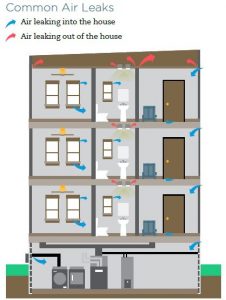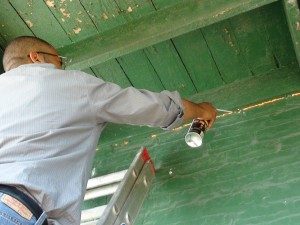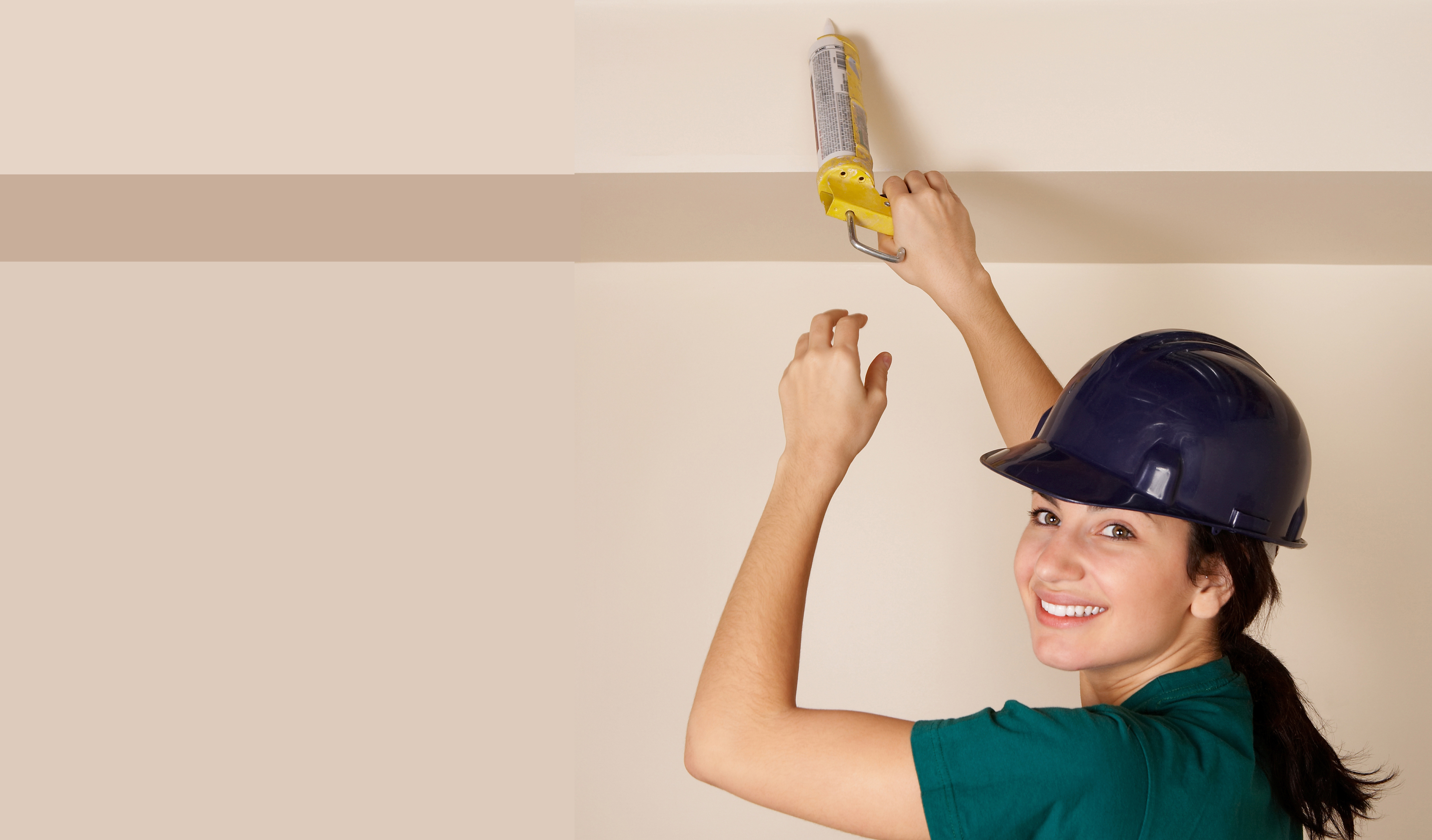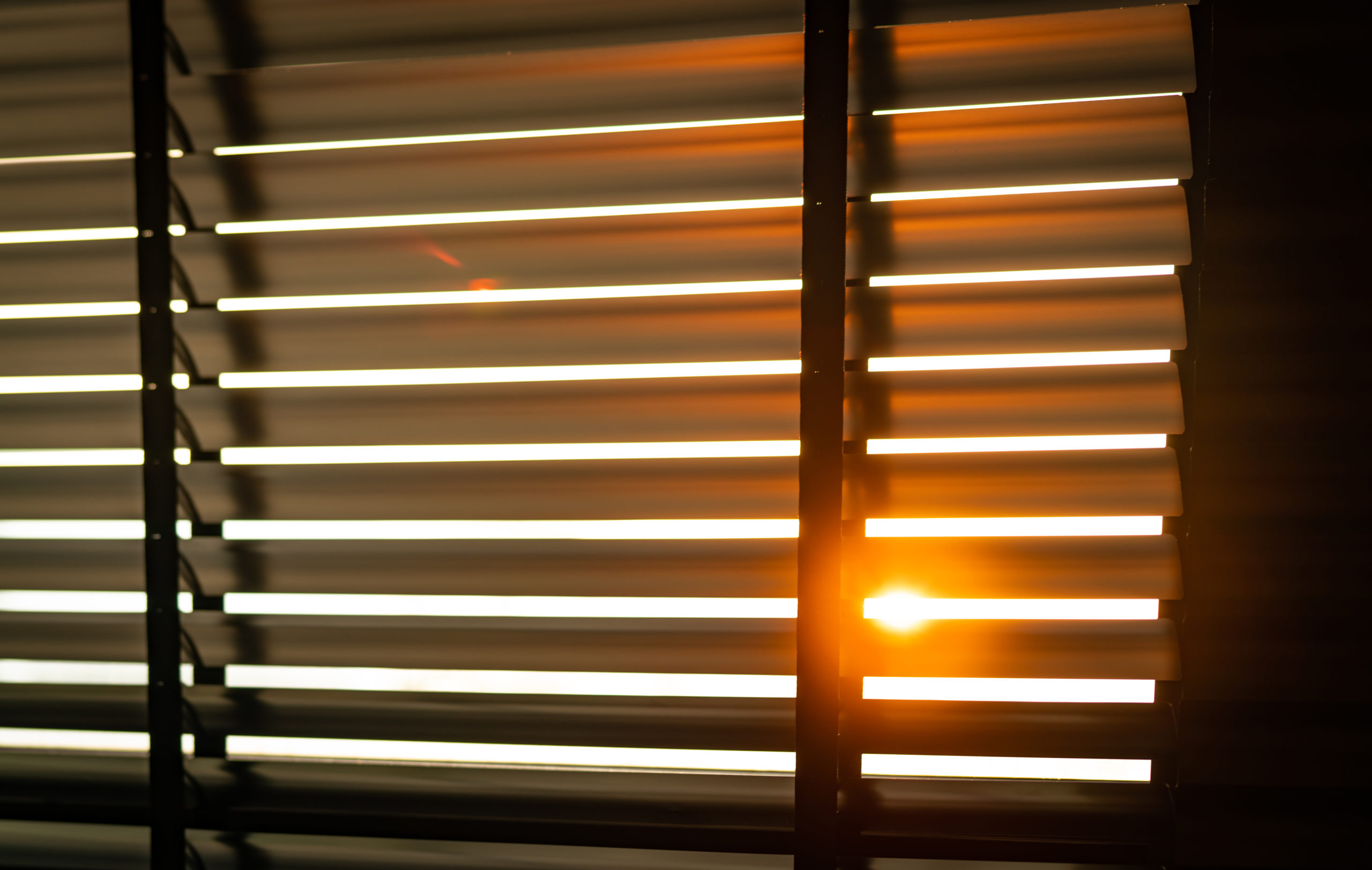Elevate Energy Mythbusters: Windows & Attics Edition
This blog post is guest written by former staff member Eric Keeley.
Great enthusiasm for home energy efficiency is often matched with misconceptions. Let’s explore a bit and figure out the difference between what we perceive, believe, and what we know to be true.
Our Perception
Windows: We see through them every day and curse the drafts coming through and around them. We are certain that old windows are the main culprit behind why we spend so much money on gas and electricity.
Attics: We don’t think much about our attic. Many of us have never ventured up beyond the scary hatch for fear that there might be a vicious squirrel lurking in a dark corner. We don’t feel cold air flowing down from the attic, so obviously there can’t be an energy problem up there.
The Truth
Elementary School Science: We all know that heat does what? Yes, you remember, heat rises. If you understand that idea, the “Stack Effect,” you understand the science behind how buildings work!
 Windows: You might think new windows are a great investment. But good windows are very expensive and are usually way down on the list of recommended and truly cost-effective energy upgrades. Often, the problem is not the windows themselves, but the way they are installed. Windows and doors must be installed tightly and square, properly air sealed and insulated into the sills, otherwise they will leak and your major investment is for naught.
Windows: You might think new windows are a great investment. But good windows are very expensive and are usually way down on the list of recommended and truly cost-effective energy upgrades. Often, the problem is not the windows themselves, but the way they are installed. Windows and doors must be installed tightly and square, properly air sealed and insulated into the sills, otherwise they will leak and your major investment is for naught.
Attics: That air that we spend money heating in our homes rises up as far as it can in your home. Cold drafts are rarely felt coming from the attic because as the warm air escapes out of any gap, hatch, exhaust fan, etc., a vacuum is created in the living areas. That vacuum causes cold drafts to come in through windows, doors, and around the foundation in the basement.
The Solution
Home Energy Assessment: Bringing in a certified home energy assessor or analyst should be your first move. The assessor will use scientific tools and established standards to measure energy loss and appliance efficiency to determine the crucial issues and define the most cost-effective measures to make your home more energy efficient. Plus, the assessment provides the homeowner with a good idea of the cost for making each of the recommended upgrades. Overwhelmed by the thought of digesting all this information? Fear not! Elevate Energy will walk you through the entire process.
Attic Air Sealing
 What would happen if all the gaps and penetrations into the attic were sealed up so that warm air had a harder time escaping out of the house? There would be less of a vacuum created in our living areas and less cold air drawn in from windows and doors, right? In this Attic Air Sealing process, different products like spray foam and ridged foam board are used to seal up the air leaks. In a typical house, a certified contractor can finish this air sealing work in less than a day with little disruption in the house.
What would happen if all the gaps and penetrations into the attic were sealed up so that warm air had a harder time escaping out of the house? There would be less of a vacuum created in our living areas and less cold air drawn in from windows and doors, right? In this Attic Air Sealing process, different products like spray foam and ridged foam board are used to seal up the air leaks. In a typical house, a certified contractor can finish this air sealing work in less than a day with little disruption in the house.
Attic Insulation: Now imagine a continuous blanket of fluffy stuff is added on top of the tightly air sealed attic floor, like a big down comforter on a bed. That is insulation. Most effective insulation now-a-days is blown in using a hose from a truck and takes just a couple hours to do a typical attic. As with the air sealing, the process is hardly disruptive to the house and is inexpensive.
Basements: After the attic, the basement is usually where the most cost-effective and least disruptive work can be done on a home. Typically, the space where the concrete foundation and the floor joists meet is where cold air comes into the house to replace the warm air lost out of the top of the home. Here, the gaps are air sealed, and then the little cubbyholes are filled with insulation.
Appliances: The energy assessment should include an analysis of the furnace, water heater, thermostat, and cooking stove to determine if they are working safely and efficiently. If there are issues, the assessment should tell you what you might do to replace or adjust these appliances.
Windows: We’ve come full circle with windows! Perhaps the energy assessment has determined that a single window or all windows of the home need to be replaced. Knowing windows are a huge investment, we want to make sure they are installed correctly and the windows selected are at least double paned.
There you have it. A quick class in the science of buildings, busting a few myths about windows and making attics a bit less scary.



